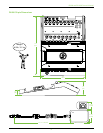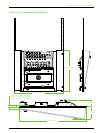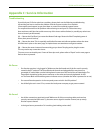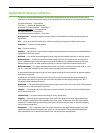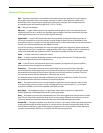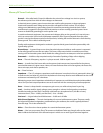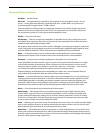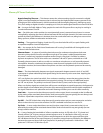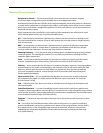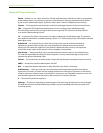
DL806 and DL1608 Owner’s Manual
40
Glossary Of Terms Continued...
Ground
— Also called earth. Ground is dened as the point of zero voltage in a circuit or system,
the reference point from which all other voltages are measured.
In electrical power systems, ground connections are used for safety purposes, to keep equipment
chassis and controls at zero voltage and to provide a safe path for errant currents. This is called a
safety ground. Maintaining a good safety ground is essential to preventing electrical shock. Follow
manufacturer’s suggestions and good electrical practices to ensure a safely grounded system. Never
remove or disable the grounding pin on the power cord.
In sensitive electronic equipment, tiny currents and voltages riding on the ground (so it’s not truly zero
volts) can cause noise in the circuits and hamper operation. Often a ground separate from the power
ground is used as the reference point for the electronics, isolating the sensitive electronics from the dirty
power ground. This is called a technical ground.
Quality audio equipment is designed to maintain a good technical ground and also operate safely with
a good safety ground.
Ground Loop
— A ground loop occurs when the technical ground within an audio system is connected
to the safety ground at more than one place. This forms a loop around which unwanted current ows,
causing noise in the audio system. Never disable the safety ground in an attempt to solve hum problems.
Guacamole
— A delicious dip comprised mostly of avocados. Speaking of dips, refer to dipping.
Hertz
— The unit of frequency, equal to 1 cycle per second. 1000 Hz equals 1 kHz.
House
— In audio-land, the house refers to the systems (and even persons) responsible for the primary
sound reinforcement in a given venue. Hence, we have the house mixer or house engineer, the house mix,
house mix amps, main house speakers, etc.
Hz
— Short for Hertz.
Impedance
— The A.C. resistance, capacitance, and inductance in an electrical circuit, measured in ohms [ ].
In audio circuits (and other AC circuits) the impedance in ohms may often be much dierent from the circuit
resistance as measured by a DC ohmmeter.
Maintaining proper circuit impedance relationships is important to avoid distortion and minimize added
noise. Our input and output impedances are set to work well with the vast majority of audio equipment.
Knee
— A knee is a sharp bend in a compressor gain curve, not unlike a sharp bend in your leg.
Level
— Another word for signal, voltage, power, strength or volume. Audio signals are sometimes
classied according to their level. Commonly used levels are: microphone level (–40 dBu or lower),
instrument level (–20 to –10 dBu), and line level (–10 to +30 dBu).
Line Level
— A signal whose level falls between –10 dBu and +30 dBu.
Main (House) Speakers
— The main loudspeakers for a sound reinforcement system. These are usually
the largest and loudest loudspeakers, positioned facing the audience; the sound is typically delivered
from the stage. This is also called the PA.
Mains
— Short for main or house speakers in a sound reinforcement system.
Master
— Me. I am your master. Obey! The master on the Master Fader app, though, refers to the master
fader. It aects the total level of the selected output in which one or more signals are mixed together.



